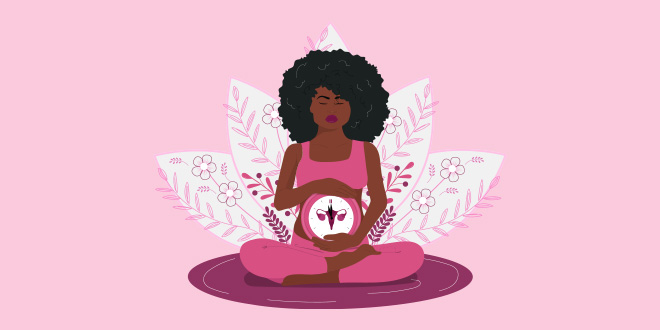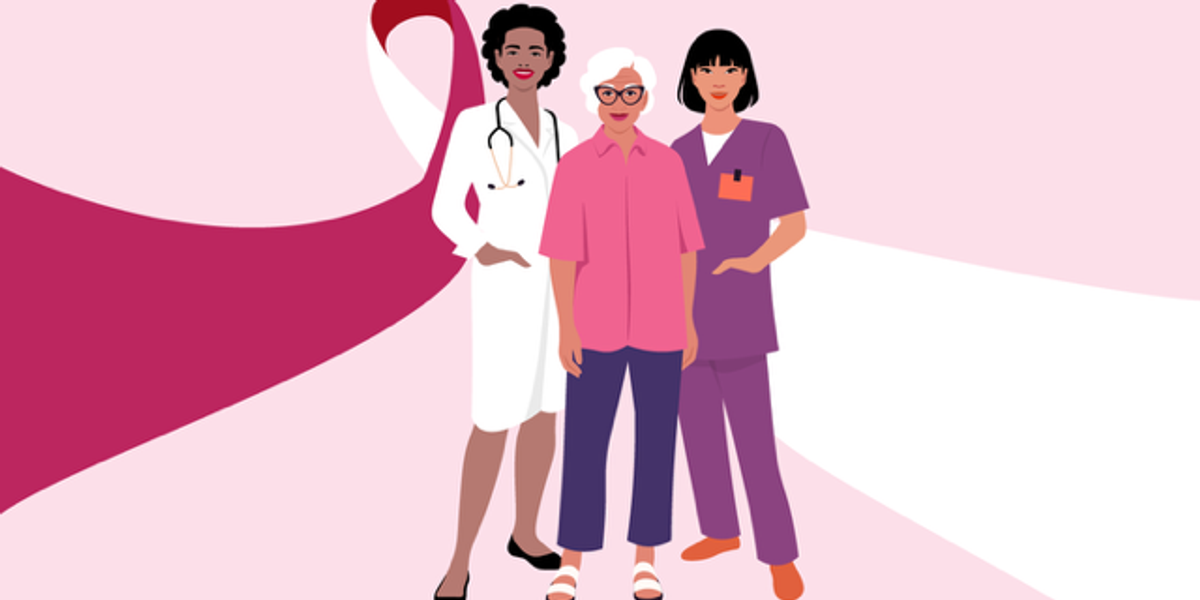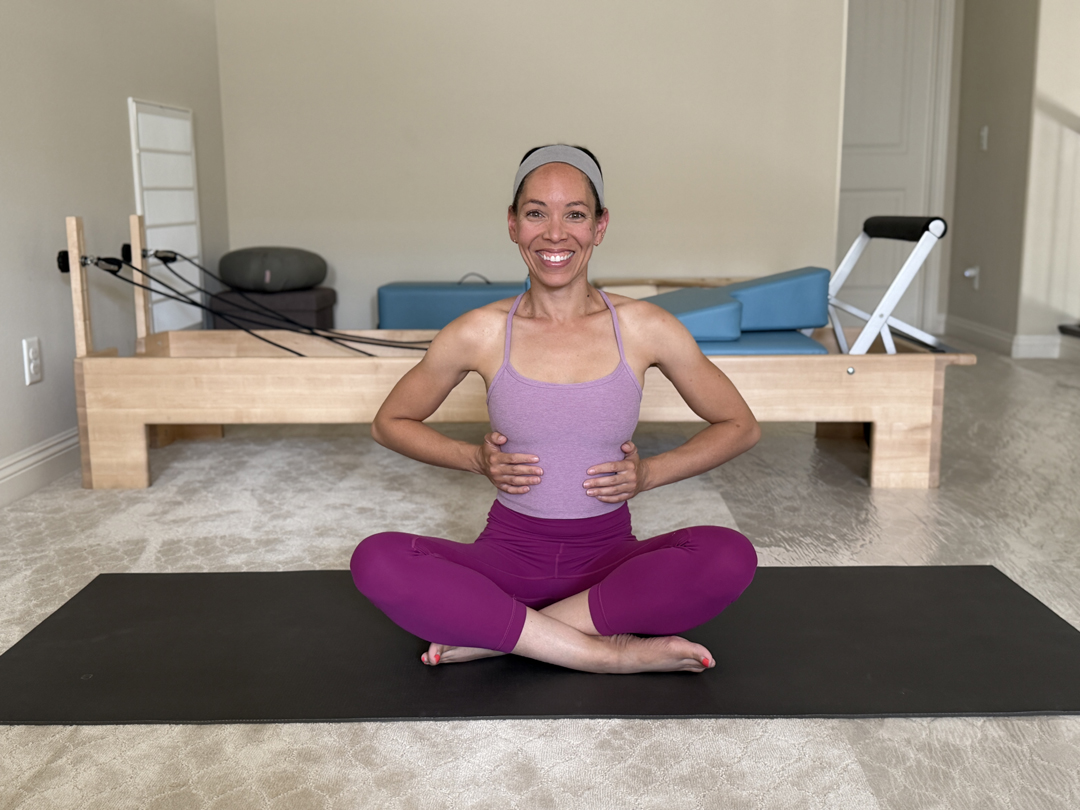
Editor’s Note: This is Part 2 of Lara’s story about her experience with uterine prolapse surgery. If you missed it, read Part 1:Preparing for Uterine Prolapse Surgery: What I Wish I Knew Beforehand for her journey leading up to the big day. Today’s post picks up the story with her waking up after surgery.
I’d read the line everywhere: “Recovery will take six to eight weeks.”
But what does that actually mean? Six to eight weeks of what, exactly? Six to eight weeks of lying flat? Of pain? Of not walking my dog or sneezing or sitting comfortably ?
The truth is, no one tells you what those weeks really feel like. So here’s my story—unedited, occasionally messy, and very human—of what happened once I woke up from uterine prolapse surgery and started the long walk back to myself.
Waking Up in Post-Op
When I came to, the world was noise and fluorescent light. Post-op sounded like chaos—a dozen TVs on different channels, every patient starring in their own show. I heard crying, moaning, random declarations of love and rage.
Coming out of anesthesia is like being peeled—slowly—out of a dream where you still feel everything but can’t name it yet. I remember flashes: the nurse’s kind face, the taste of metal, the weight of the blanket that wasn’t quite enough. I remember thinking, I am so glad they’re done cutting me open—and holy hell, what did I agree to?
When I was lucid enough, they told me I could go home. Relief washed over me—right up until I tried to sit.
No one warns you that sitting is the most painful position after pelvic surgery. Standing? Fine. Lying down? Manageable. Sitting? Torture. I had brought a pillow, but it wasn’t the right one. Every bump of the car ride home felt like punishment. I cried the whole way, gripping the door handle and muttering, Never again.
If you remember nothing else from this story, remember this: bring all the pillows. Accept the pain meds before you leave. There is no medal for suffering.
The First 72 Hours: Pain, Poop, and Perseverance
The first three days are about survival. You live in four-hour increments—pain, bowel movements, hygiene, comfort—in that exact order.
Pain
I’d had a 4 cm tumor removed and a stage-three prolapse corrected. Translation: everything down there hurt. I’d made one good decision before surgery and one bad one.
The good: I worked out a medication schedule with my surgeon ahead of time. Tylenol and Advil, alternating, even in the middle of the night. I set alarms for 1 a.m. and 5 a.m. When I stuck to it, the pain was tolerable.
The bad: I declined the prescription for stronger meds. I’d read too much about addiction and thought I’d tough it out. The moment the anesthesia wore off, I regretted it. Within hours, I was shaking with pain, bargaining with my body to just let me sleep. The next morning, I asked for the prescription. I never ended up taking it—but having it in the cabinet made me feel safe.
Also: ice and heat. I bought Nyssa postpartum underwear with reusable gel packs that could be frozen or heated. Pro tip—buy three, not two. While one’s in use and one’s thawing, you’ll want a third ready. The gentle pressure of those cold packs was magic the first few days. By day three, I’d switched to heat, which felt like a hug from the inside.
Bowel Movements
Every woman who’s been through this knows: the first bowel movement looms like a boss battle. You’re terrified of pushing, but you can’t not go.
Thankfully, my pelvic-floor physiotherapist had given me homework weeks before surgery: the right ratio of soluble to insoluble fiber, how much stool softener to take, how to breathe instead of strain, and—yes—a special footstool to change my body’s angle on the toilet.
Even with all that, the first time was brutal. I cried in the bathroom, clutching the counter. But afterward, I felt this ridiculous surge of pride. By day two, I was going without pain. That physiotherapy prep saved me.
Hygiene
When you’ve got stitches in your perineum, toilet paper is not your friend. I had squeeze bottles of distilled water beside the toilet for rinsing and used soft towels to pat dry. It sounds small, but that tiny change made everything feel cleaner and less scary.
The morning after surgery, I shuffled into the shower, moving like a ninety-year-old. My dog—my 50-pound Sheepadoodle shadow—had refused to cuddle me since I came home. Apparently, I smelled like the operating room. The second the warm water hit my skin and I washed away the hospital smell, she jumped back onto the bed beside me. That felt like healing.
Comfort
Thanks to my coach (Alison Heilig), I had spent time before my surgery creating a “recovery nest.” When you can’t do much else, creating comfort becomes an act of control and it eased my anxiety in the days leading up to up to the surgery.
I surrounded my bed with candles and pillows. I had books nearby and signed up for a streaming services with a new array of movies and shows cued up.
I had my medication schedule on prominent display and all the medications readily at hand. I had a cooler full of ice and drinks. I had extension cords to ensure that my phone, iPad, and ear buds were always charged. I purchased a tray table on skis for the bed (a GREAT purchase because I can set my iPad on the table and NOT on my lap) and a special pillow-like-wedge for sitting up in bed.
Thanks to all these preparations, I was generally in a space of comfort.
The most comfortable physical positions are lying down and standing. I found sitting to be really difficult. I’ve had to arrange several different pillows (including the special pillow-like-wedge) in just the right positions to be able to sit.
The first day post-op, I spent mostly lying down. As the days are progressing, I’m able to sit for longer stretches of time. I’d stocked my bedside table like a tiny command center: candles, lip balm, snacks, pain meds, phone chargers, water bottles. I had a wedge pillow for sitting up and a tray table for my iPad. It wasn’t glamorous, but it was my sanctuary.
What Happens When You Get Cocky
At seventy-two hours, I thought I was ahead of schedule. The bleeding had stopped, pain was manageable, and I was even feeling a little smug. Then my family ordered takeout.
It smelled so good. I told myself a few bites wouldn’t hurt.
Huge mistake.
That night, I got food poisoning. Not the mild, regret-your-life-choices kind—the sleep-on-the-bathroom-floor, cry-into-a-towel kind. My body did things my surgeon specifically told me not to do. The next morning, I started bleeding again. Not spotting—bleeding. Deep red, with clots the size of quarters.
I was convinced I’d ripped out my stitches. I called the surgeon’s office in tears and saw the physician assistant that afternoon. She was wonderful, but what came next was one of the most painful experiences of my life. She had to manually clear the blood from my uterus to see what was going on. Q-tips didn’t cut it. Fingers wrapped in gauze did. I white-knuckled the exam table, biting back sobs.
When she finished, she stepped out to confer with the surgeon. I lay there, crying—partly from pain, partly from shame, partly from sheer exhaustion. When she came back, she told me something I couldn’t believe: “We think this is your period.”
Apparently, it’s not uncommon for pelvic surgery to trigger menstruation—even in women like me who are in perimenopause and not having regular periods. But no one had mentioned that possibility—not in a single brochure, conversation, or Google result. I felt relief, confusion, and a tiny bit of rage. How are women supposed to prepare for what they’re not told might happen?
Back to Square One (Almost)
The bleeding slowed over the next few days, but it shook my confidence. I followed every instruction to the letter. I was the model patient. And yet here I was, terrified I’d undone the repair because of a bad batch of takeout noodles.
It was humbling—and honestly, a little funny once I stopped crying. I had survived childbirth, academia, and tenure review. And now my downfall might be takeout.
When I saw my surgeon again the next week, she reassured me I hadn’t ruined anything. My uterus, apparently, was a fighter.
The Emotional Side: Shame, Relief, and Recovery
There’s something uniquely vulnerable about surgery “down there.” I had been embarrassed to even need it. Ashamed that my body—this body I trusted, this body that birthed babies—was failing.
That shame lingered longer than I expected. It wasn’t just physical healing; it was emotional unlearning. My recovery nest, which I’d built for comfort, turned into a cocoon where I could finally let myself feel. I wasn’t weak. I wasn’t broken. I was recovering.
And slowly, I started to reclaim normalcy.
How ridiculous it feels now to remember that I was ashamed of my uterus needing surgery. I wouldn’t have been ashamed if it as a kidney or some other internal organ. But because it was my uterus, I felt ashamed.
I hope you, dear reader, read my experience and realize that you are far from alone and there’s nothing for you to be ashamed of.
Twenty Days Later: The Anticlimax
By day twenty, I was almost bored. I’d stopped all pain meds. I could sit for an hour or two if the chair was padded. I’ve even put away my ice/heating packs. My surgeon confirmed I was healing beautifully.
My strength coach has me walking half a mile twice a day. She also has assigned me some core and pelvic floor breathing exercises and self-myofascial release exercises which has helped me avoid getting too stiff from inactivity.
Since I primarily work from home, I’m planning to go back to work at 50% next week.
After all the anxiety and dread, the end came quietly. No grand finale, no movie moment—just a return to ordinary life. Which, honestly, was perfect.
What I Wish Someone Had Told Me
I wish someone had told me that “six to eight weeks” isn’t a sentence—it’s a range and healing won’t be linear.
I wish someone had told me that pain management isn’t weakness, it’s strategy.
I wish someone had told me that pelvic floor physical therapy before surgery makes every part of recovery easier.
I wish someone had told me that it’s normal to feel grief for the body you had before.
And I wish someone had told me that you’re allowed to talk about it—that you should talk about it.
Because silence doesn’t serve us. It isolates us.
Closing Thoughts
If you’re facing uterine prolapse surgery, here’s what I can promise: the first days are rough, but they pass. The fear fades faster than you think. You will stand. You will laugh. You will sneeze without crying. And one day, you’ll look back and realize your body didn’t fail you—it just needed help finding its balance again.
I’m deeply grateful to my pelvic floor physio and my strength coach, Alison Heilig, for helping me face and recover from this surgery. Their advice (and my determination to act on their advice) made a HUGE difference.
I bet if I had confided in more friends, colleagues, and family members, I would have had even more support. So, if you are facing this journey, I encourage you to surround yourself with people who can help you. The physical and emotional experience can be greatly improved when you trust others with your truth.
It’s not the easiest chapter, but it’s survivable. And maybe, if enough of us keep talking about it, the next woman won’t have to Google in the dark at 2 a.m. looking for someone who’s been there. —Lara, Guest Writer

.jpeg)


















.jpeg)













 English (US) ·
English (US) ·